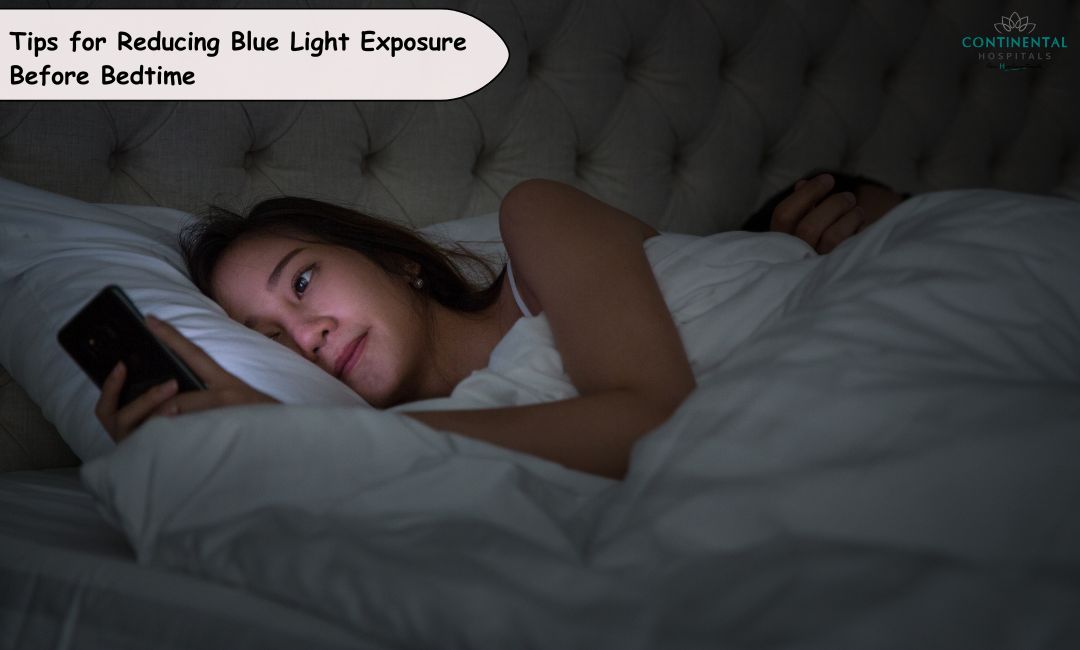Sleep Quality Is Paramount for Overall Health and Well-Being. It Plays a Crucial Role in Numerous Physiological and Cognitive Functions. Adequate, Restful Sleep Supports Immune Function, Regulates Mood, Enhances Cognitive Performance, and Facilitates Physical Recovery. When an Individual Consistently Experiences Poor Sleep Quality, It Can Lead to Various Health Issues Such as Weakened Immune Function, Increased Risk of Chronic Conditions Like Obesity and Heart Disease, Impaired Cognitive Function, Mood Disturbances, and Decreased Overall Quality of Life.
One Factor Significantly Affecting Sleep Quality Is Exposure to Blue Light, Especially from Electronic Devices Such as Smartphones, Computers, and Televisions. Blue Light Is Part of the Visible Light Spectrum and Is Emitted in Large Amounts by Digital Screens. Exposure to Blue Light, Especially During the Evening or Night, Can Disrupt the Body's Natural Sleep-Wake Cycle, Known as the Circadian Rhythm. This Light Exposure Inhibits the Production of Melatonin, a Hormone That Regulates Sleep, Making It More Difficult to Fall Asleep and Potentially Reducing the Overall Duration of Restorative Sleep.
What Is Blue Light?
Blue Light Is Part of the Visible Light Spectrum That Has a Relatively Short Wavelength and Higher Energy Compared to Other Colors. It Is Present in Natural Sunlight and Is Emitted by Various Artificial Sources, Including Screens Such as Computers, Smartphones, and Tvs, as Well as Led Lights. Blue Light Plays a Crucial Role in Regulating the Body's Circadian Rhythm, Which Controls the Sleep-Wake Cycle. However, Excessive Exposure to Blue Light, Especially from Artificial Sources, Has Raised Concerns Due to Its Potential Effects on Human Health.
Screens Emit a Significant Amount of Blue Light, and with the Increasing Use of Digital Devices in Modern Life, Prolonged Exposure to Screens Has Become a Common Concern. Blue Light Exposure from Screens, Particularly Before Bedtime, Can Interfere with the Body's Production of Melatonin, a Hormone That Regulates Sleep. This Disruption Can Lead to Difficulty Falling Asleep, Disturbed Sleep Patterns, and Potentially Impact Overall Sleep Quality.
How Blue Light Affects the Sleep-Wake Cycle, Circadian Rhythm, Melatonin Suppression and Sleep Quality?
Effect on Circadian Rhythm: The human body has an internal clock known as the circadian rhythm, which regulates various physiological processes, including the sleep-wake cycle. Exposure to light, especially blue light, in the evening and nighttime can disrupt this cycle. Blue light exposure in the evening signals to the brain that it's still daytime, thus suppressing the production of melatonin, a hormone that helps regulate sleep-wake cycles.
Melatonin Suppression: Blue light, particularly in the 450-480nm wavelength range, affects the production of melatonin more than other types of light. The pineal gland in the brain typically begins to secrete melatonin in the evening when it gets dark, signaling the body to prepare for sleep. However, exposure to blue light, primarily from screens and certain indoor lighting, inhibits the production of melatonin, delaying its release. This delayed melatonin release can lead to difficulty falling asleep or disrupted sleep patterns.
Disrupted Sleep Quality: When melatonin levels are disrupted due to blue light exposure, it can result in poor sleep quality. Reduced melatonin secretion or delayed onset of melatonin can lead to difficulties falling asleep, staying asleep, or achieving restorative sleep. This disruption can also affect the overall duration of sleep, causing individuals to experience sleep deprivation or insomnia-like symptoms.
Tips for Reducing Blue Light Exposure
Use blue light filters: Consider installing blue light filter applications or software on your electronic devices, such as laptops, smartphones, and tablets. Many devices have built-in settings that allow you to reduce blue light emission or activate a "night mode" that decreases the amount of blue light emitted.
Wear blue light-blocking glasses: Specialized glasses with lenses designed to block or filter out blue light can help reduce eye strain and minimize the impact of blue light exposure, especially if you spend extended periods in front of screens.
Limit screen time before bedtime: Avoid using electronic devices at least an hour before bedtime. Blue light can interfere with the production of melatonin, a hormone that regulates sleep, making it harder to fall asleep. Engage in relaxing activities like reading a physical book, taking a bath, or practicing meditation instead.
Adjust device settings: Reduce the brightness of your screens and adjust the color temperature settings to warmer tones during the evening. Many devices have settings or apps that can automatically adjust the screen brightness and color temperature based on the time of day.
Use screen protectors: Apply screen protectors that are designed to filter out blue light to your devices. These protectors can help reduce the amount of blue light emitted from screens.
Consider ambient lighting: Use softer, warmer, and dimmer lighting in the evening. Avoid bright overhead lights and opt for warmer, more relaxing lighting options to counterbalance the effects of blue light.
Take regular breaks: Follow the 20-20-20 rule when using screens for extended periods. Every 20 minutes, take a 20-second break and look at something 20 feet away to give your eyes a rest.
Choose low-blue-light technology: When purchasing new devices, consider those with low-blue-light emission features. Some newer models of screens and devices are designed with reduced blue light emission technology.
Reducing blue light exposure holds immense significance in enhancing sleep quality and overall well-being. Blue light emitted from electronic devices, such as smartphones, computers, and televisions, can disrupt the body's natural sleep-wake cycle, known as the circadian rhythm. This disruption can lead to difficulties falling asleep, reduced sleep duration, and compromised sleep quality.
Encouraging the adoption of these strategies can significantly improve sleep quality. Adequate and restorative sleep is crucial for physical health, mental well-being, cognitive function, and overall productivity. By reducing blue light exposure, individuals can align their natural sleep patterns more closely with their daily routines, leading to better sleep quality and a more refreshed state upon waking.
Related Post:
1. Blue Light and Sleep Patterns: Debunking Myths and Unveiling Facts
.webp)














